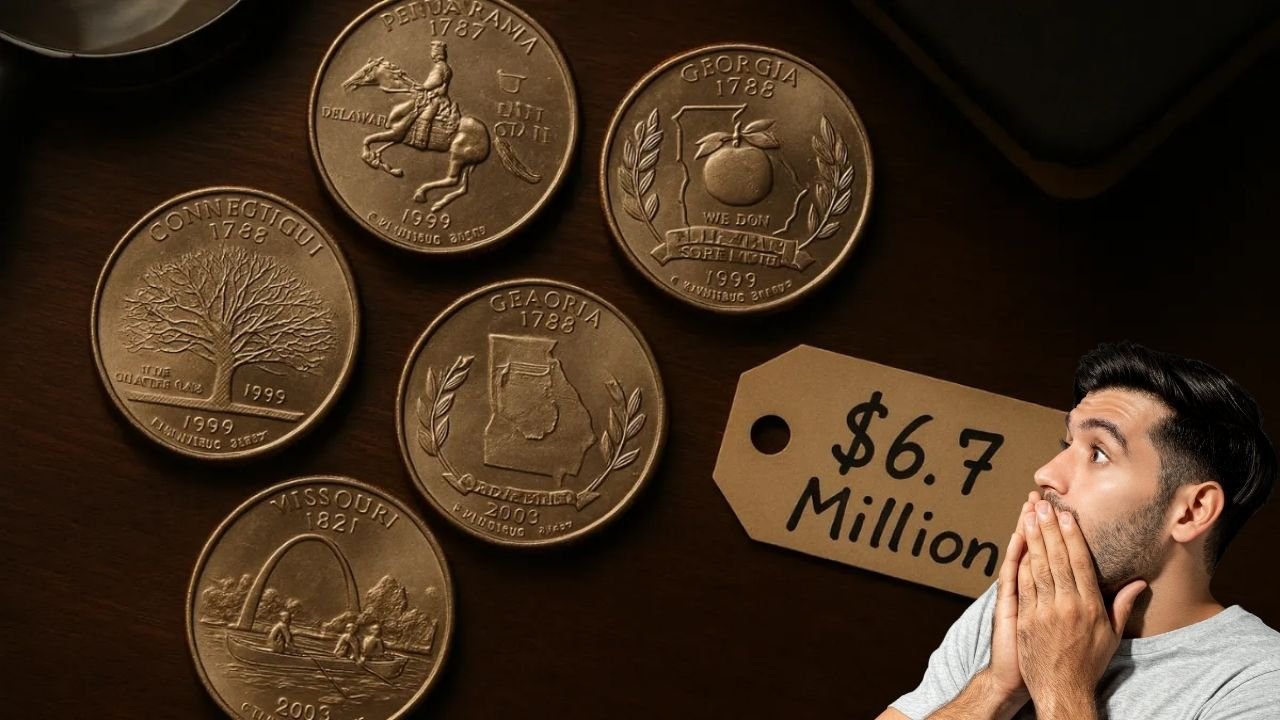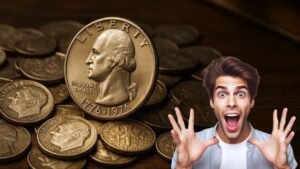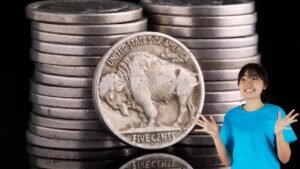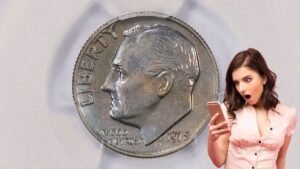What if the quarter in your pocket was worth millions instead of just 25 cents? That’s the reality for a handful of rare state quarters released by the U.S. Mint. While most are worth only face value, some carry hidden features that make them worth thousands—or even up to $6.7 million.
In this article, we’ll look at five of the most valuable state quarters, what makes them special, and how you can spot one in your own change.
Why Are Some State Quarters So Valuable?
The State Quarters Program, launched in 1999, featured unique designs celebrating each U.S. state. More than 34 billion coins were produced, but only a tiny fraction became valuable due to:
- Minting errors such as double dies or off-center strikes.
- Low production runs that made certain coins rarer.
- Unique varieties like extra markings or added designs.
Collectors pay high prices for these rare coins, sometimes pushing them into the millions.
The 5 Valuable State Quarters Worth Big Money
Here are the top five valuable state quarters and what makes them so collectible:
| State Quarter | Year | Special Feature | Estimated Value |
|---|---|---|---|
| Delaware | 1999 | “Spitting Horse” error | Up to $7,000 |
| Georgia | 1999 | Off-center strike | Up to $10,000 |
| Minnesota | 2005 | Extra tree error | Up to $15,000 |
| Wisconsin | 2004 | Extra leaf variety | Up to $30,000 |
| Oregon | 2005 | Rare minting error | Up to $6.7M |
These coins might look ordinary at first glance, but small differences like an extra leaf on the Wisconsin corn stalk or an added tree on the Minnesota design can make them worth a fortune.
How to Spot a Rare State Quarter
Finding one of these coins doesn’t require special equipment—just careful observation. Here’s what to check:
- Year and State – Focus on 1999, 2004, and 2005 issues.
- Design Flaws – Look for extra designs, doubled letters, or misplaced details.
- Condition – Uncirculated coins in high grades are worth more.
- Mint Marks – Certain mints produced fewer coins, making them rarer.
A magnifying glass can help spot subtle errors. If you think you’ve found one, have it authenticated by grading services like PCGS or NGC.
The Legacy of the State Quarters Program
The State Quarters Program ran from 1999 to 2008 and became one of the most successful U.S. coin initiatives ever. It introduced millions of Americans to coin collecting and inspired new generations to start saving coins.
Even though billions were minted, only a handful are worth extraordinary amounts. That’s why collectors still search rolls of quarters, pocket change, and estate collections in hopes of striking gold.
Tips for Collecting State Quarters
Want to increase your chances of finding valuable coins? Try these strategies:
- Check your change daily – Rare coins still surface in circulation.
- Search bank rolls – Many people unknowingly cash in valuable coins.
- Use a coin album – Keep finds organized and protected.
- Study known errors – The more you know, the easier it is to spot them.
- Attend coin shows – Learn from experts and see rare examples up close.
FAQs About Valuable State Quarters
Q1: Are all state quarters worth money?
No. Most are worth face value, but rare varieties and error coins can be worth thousands.
Q2: What’s the rarest state quarter?
The Oregon quarter with a rare minting error is rumored to be worth up to $6.7 million.
Q3: Where can I sell valuable quarters?
Auction houses, coin shops, and trusted platforms like eBay are popular options.
Q4: Can circulated quarters still be valuable?
Yes. Even circulated coins with rare errors can sell for high amounts.
Q5: Do I need professional grading for my coins?
Yes. PCGS or NGC certification can confirm authenticity and increase resale value.
Conclusion
The 5 valuable state quarters worth up to $6.7 million prove that hidden treasures might be sitting in your pocket change right now. From the “Spitting Horse” Delaware quarter to the legendary Oregon rarity, these coins show how history, design, and errors can create life-changing value.
So before you spend that next quarter, take a closer look—you could be holding one of America’s rarest and most valuable coins.



